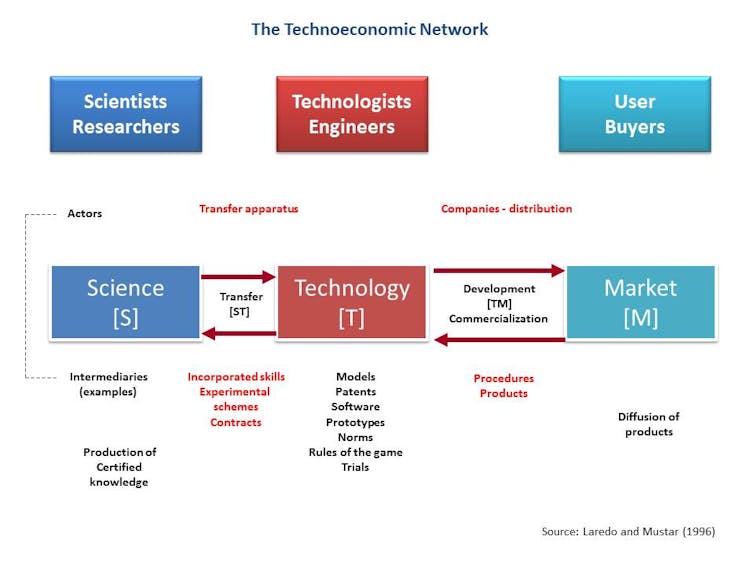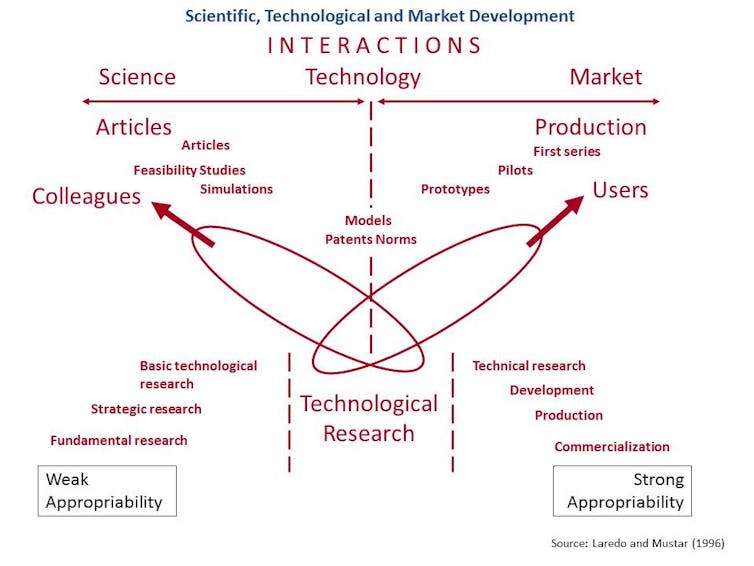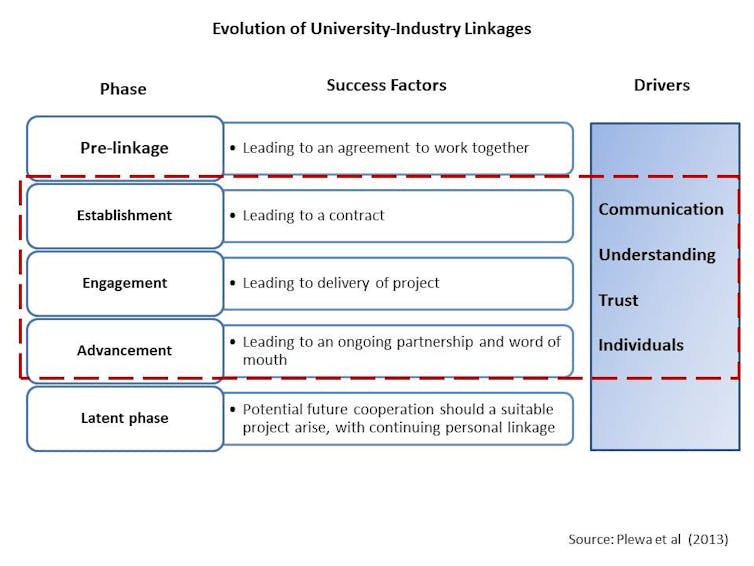
Universities play a key role in a country’s national innovation system (NIS). As I discussed in a previous article, Australia’s universities perform well by international benchmarks. The level of Australia’s higher education expenditure on R&D (HERD), as a proportion of GDP, is higher than the OECD average. However, Australia’s university sector is relatively small, with only 39 institutions. Further, the range of tasks these universities are expected to undertake is also very wide.
This is a situation found around the world where there is an expectation that universities will provide not only education and a source of fundamental research, but also solutions to a wide range of policy priorities. As Geoffrey Boulton from the University of Edinburgh noted in an article published in the University World News in 2009:
“In the last two decades, higher education worldwide has moved from the periphery to the centre of governmental agendas. Universities are now seen as crucial national assets in addressing many policy priorities, and as: sources of new knowledge and innovative thinking; providers of skilled personnel and credible credentials; contributors to innovation; attractors of international talent and business investment; agents of social justice and mobility; contributors to social and cultural vitality; and determinants of health and well-being.”
Technology transfer and commercialisation (TTC)
In the field of innovation and economic development policy, it is common to have a strong emphasis on the fostering of university-industry linkages designed to help stimulate R&D. A critical issue for the successful engagement of universities with industry is the process of technology transfer and commercialisation (TTC).
The diagram below illustrates what has been described as the “Techno Economic Network”, which refers to a process commencing with fundamental scientific research [S], then moves into specific technologies [T] and finally into the market [M].

The critical areas for success or failure in the process are at the point of transfer of scientific findings into technologies that can be commercialised [ST], and then the ability to commercialise these technologies [TM]. It is at these two transfer points that the major weaknesses in the system are found.
Enhancing the linkages between universities and industry in TTC is a global challenge and requires attention to be given to the fundamentally divergent roles and culture of the two communities. The diagram below serves to illustrate this point. On the left hand side is the scientific community as found within universities.
Their primary focus is on the publication of research findings in peer reviewed academic journals. This is how they are rewarded and the “publish or perish” culture that pervades universities is reinforced by national research performance systems that allocate funding to publication output. However, the publication of findings risks the ability of the intellectual property associated with this research being appropriated for future commercialisation.

On the right side of the model is the market and it is here that fundamental research needs to be transformed into commercial applications. The registration of IP rights via patents and other formal protective measures is often an essential step in the ability to undertake the TTC process. Getting academics to disclose their IP for potential commercialisation, and the risk that this might have on their ability to publish findings in journals creates a tension between the purpose of the academic, and the industry partners.
Uneasy bedfellows
The different motivations for universities and their industry partners can make for uneasy bedfellows when they seek to collaborate over research projects. For example, Judith Berman, from the University of Western Australia, writing in the Journal of Higher Education Policy and Management in 2008, described the experiences of university and industry partners seeking to work collaboratively via an Australian Research Council (ARC) Linkage grant. These grants are designed to promote enhanced collaboration between universities and industry. Her study highlighted the substantial gap between these two parties.
As one academic researcher engaged in the project explained:
“Industry isn’t concerned with the science – only with the practical solution to the specific industry problem. They need persuading that the scientific work is essential.”
By contrast the industry partners viewed the linkage grant as a potentially useful way to support research that might lead to commercially useful outcomes. Major barriers to collaboration were the need to sort out ownership over IP rights, and the often laborious legal and administrative paperwork that this involved.
Another area of tension was the need to manage projects in an efficient and timely manner. Academics were accused by their colleagues in industry of taking far too long to complete the research, which was not often viewed by them as a high priority. As one industry partner commented:
“Academics are notorious for taking a long time to do research, whether it’s due to teaching commitments or because the work is linked to the requirements of a PhD…two months of work with a professional agency is closer to two years for academics…this is a big issue.”
A major problem was the lack of communication and understanding between the partners.
Developing a framework for enhanced university-industry collaboration
The need to develop more effective communication and understanding between university and industry partners was recognised by Carolin Plewa from the University of Adelaide and her colleagues. Their article was published in the Journal of Engineering and Technology Management in 2013. The following diagram illustrates their conceptual framework, which recognises a multi-phase process of building up a working relationship.

Critical issues for successful collaboration between universities and industry partners are open and two-way communication that enhances understanding and mutual trust between the two partners. Personal relationships and a clear definition of the project’s goals, timelines and outcomes are essential. Both sides must recognise the other’s requirements, strengths and limitations. Any lack of communication, understanding and trust between the individuals engaged in the process will most likely end in failure.
Where to from here?
Writing in the journal Prometheus in 2007 Alan Collier outlined a framework for the commercialisation of university research in Australia. His argument was that Australia needed to do more to enhance its TTC performance. Among his recommendations for future action were changes to the taxation and IP rights regimes to encourage university research to be disseminated more quickly to industry.
He also called for changes to the “missions and policies” of our universities to make them more supportive of commercialisation. In this he noted the need to include commercialisation activity more prominently among the criteria used to make promotions and appointments. The value of university commercialisation activity to the Australian economy was not adequately recognised due a paucity of data.
He also sought a review of many university TTC offices. While most have such entities their level of resources and overall effectiveness was open to question. Likewise, there needs to be an objective assessment of the value of science or technology parks. These are typically located close to universities in the expectation that they will serve as a mechanism for enhanced TTC activity. Yet the evidence for this is ad hoc and lacking in rigour.
Some, like Geoffrey Boulton question whether universities should be viewed as drivers of innovation and commercialisation within an economy. Although they can make a significant contribution to fostering new ideas, their role should be viewed as less direct. Rather than active participants in commercialisation, their role should be one of producing world class research and excellent graduates.
Summing up
Without doubt Australia has to embrace innovation across all sectors of its economy if it is to maintain its living standards. Productivity growth has declined significantly since the 1990s, and the key to turning this around is increased investments in innovation.
The quality of research undertaken within Australia’s university sector is not in question. Where the challenge lies is in bridging the divide between the academic and industry communities. This will require a change of mindset on both sides. It will also require an adjustment to the way in which academics are rewarded and how they and their institutions perceive their role within the national economy.
Universities should not be viewed as applied R&D centres. Their resources are best allocated to education and undertaking research that commercial organisations will not or cannot do. Useful collaborative alliances between universities and industry can be forged. The critical ingredients are effective communication and an appreciation by both parties of the limitations, strengths and motivations of the other.
Note: Tim Mazzarol is President of the Small Enterprise Association of Australia and New Zealand (SEAANZ).
SEAANZ is a not-for-profit organisation founded in 1987. It is dedicated to the advancement of research, education, policy and practice in small to medium enterprises.
